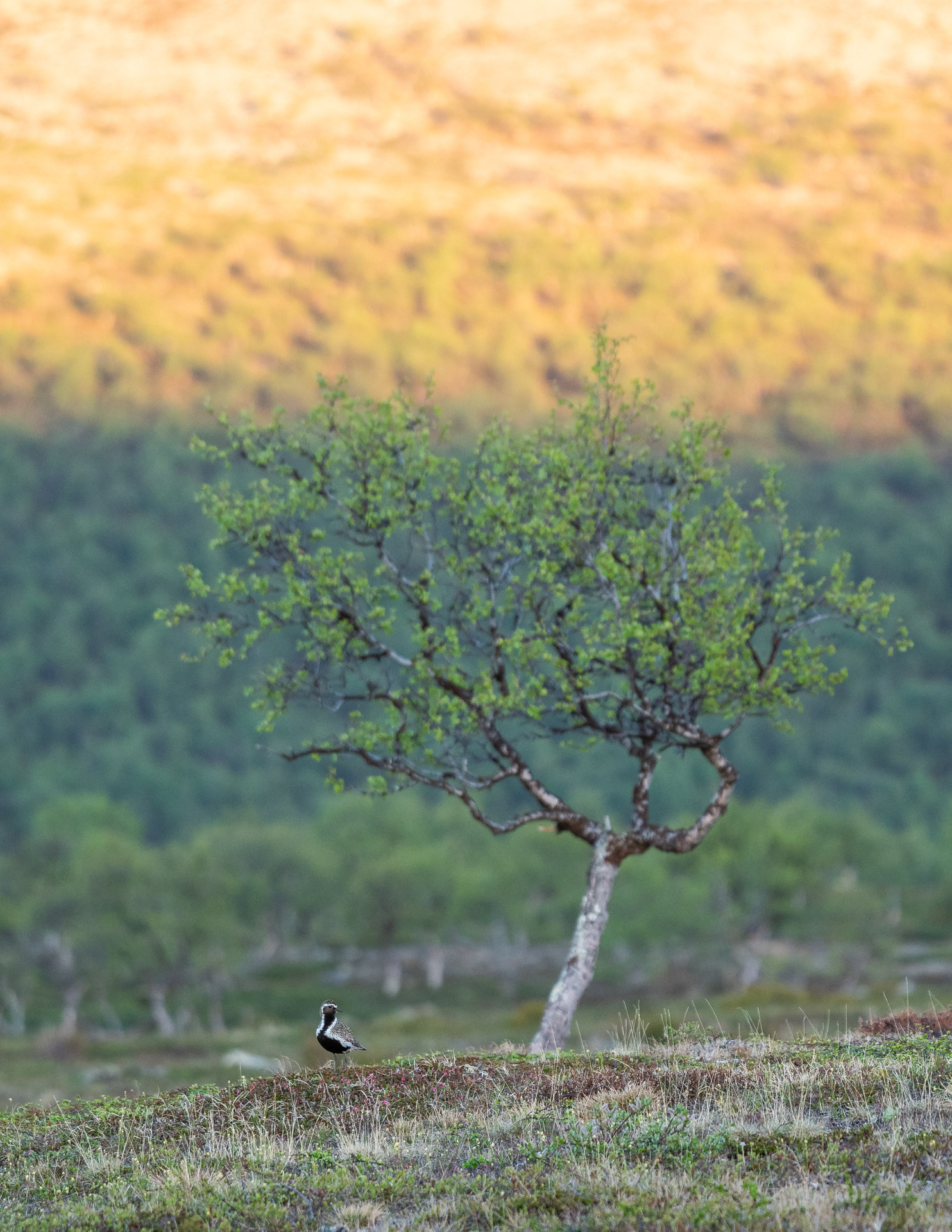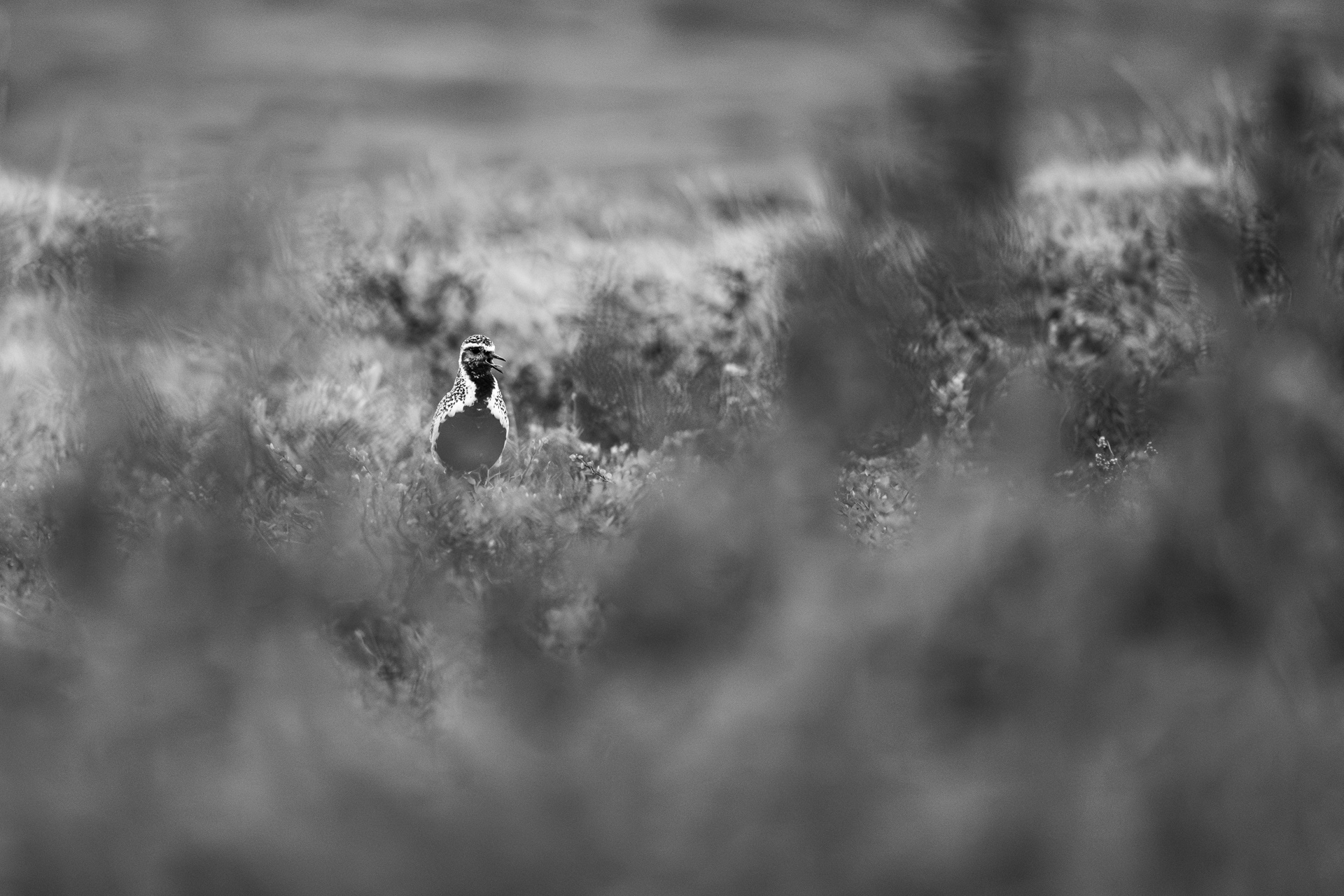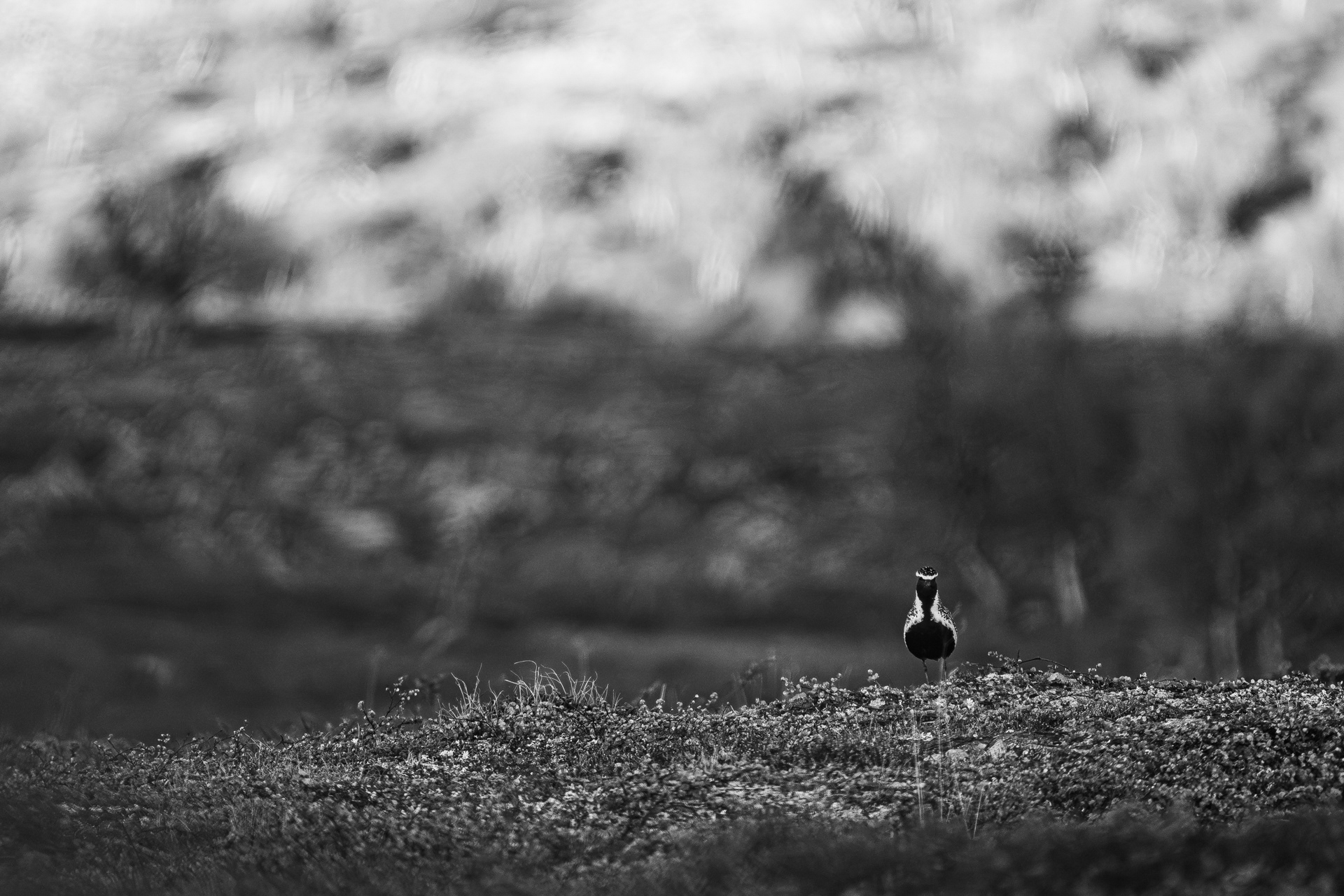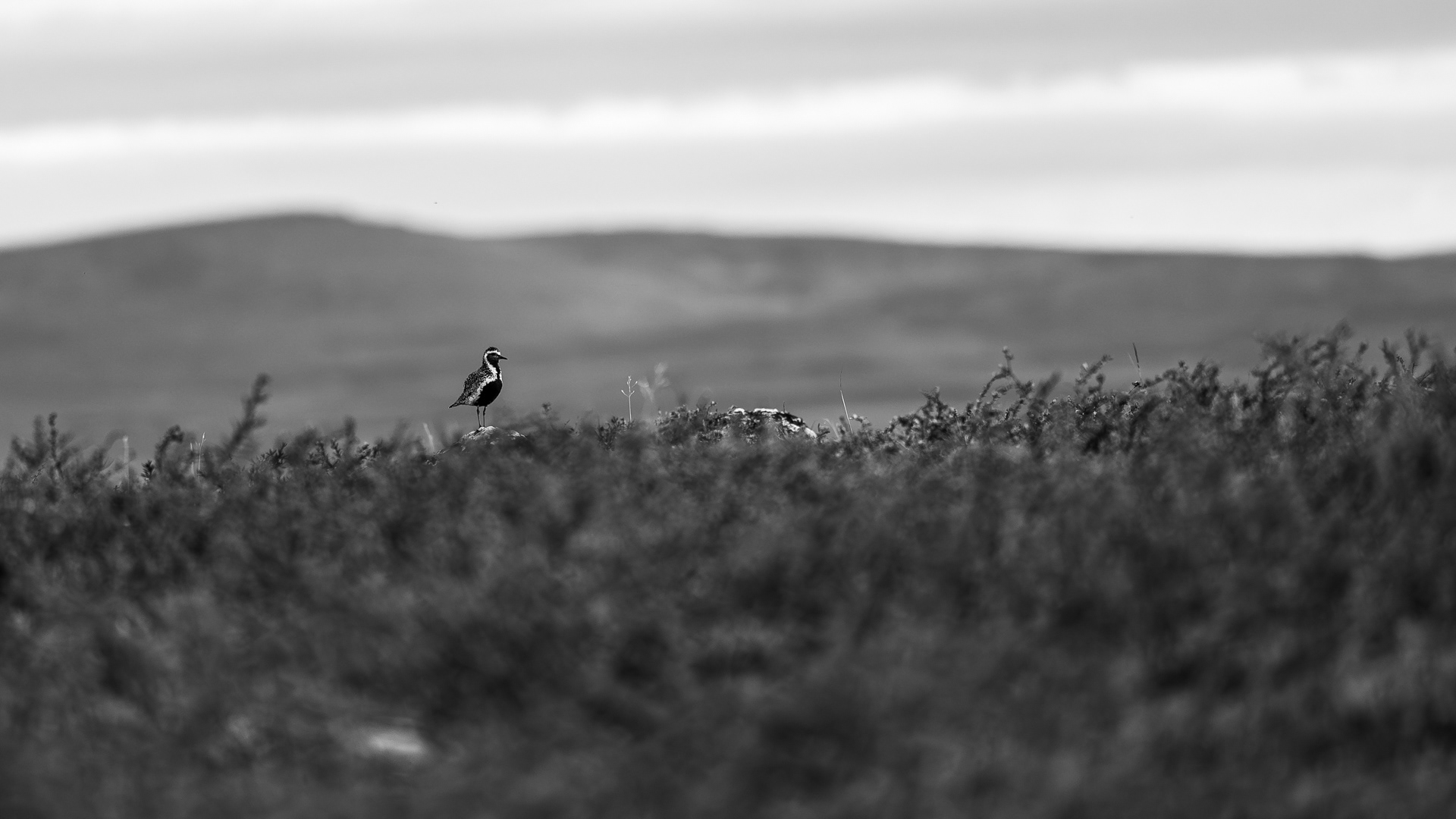Golden plovers are amazing birds. Before I saw them in Scandivia, I knew them from countless trips to the Zeeland or the Uitkerkse polders, two important wintering areas close to my home. On some occasions, you could see golden clouds of birds, shining in the cold winter sun, a beautiful sight. I always get happy when I get the chance to see it.
In the Low Countries, golden plovers have been extinct as a breeding bird for some time. Once upon a time, when vast, damp heathlands and mires still existed, the golden plover bred here regularly. However, by the early 20th century, that time was already over. The last recorded breeding occurred in 1999, when a pair of golden plovers nested in the High Fens, the largest mire complex in Belgium. To date, this remains the southernmost known breeding record in Europe — a record that Belgium will probably keep for a while.



Golden Plovers are still common in Scandinavia, especially in the highlands above the tree line. In summer, they look completely different from the birds you see here in winter. Their overall golden-toned winter plumage gives way to a beautifully marbled gold pattern on the back, while a black facial mask extends into a narrow bib that merges with the black belly, bordered on both sides by a clean white band. Males are generally darker than females and have a more uniformly black belly.
My first encounter with their breeding grounds took place in the summer of 2022, when I was doing field research on Dotterels, a distant relative of the Golden Plover. We found several nests at the time and even managed to ring some chicks, beautifully coloured in a golden-green hue, like moss. On all my subsequent treks, Golden Plovers have never left my side. You often hear them before you see them. Their melancholic, slightly plaintive call sounds like a cry for companionship - or at least, that’s how I imagine it. This is the sound I associate with the vast, open landscapes of Sápmi.
These photos are an ode to this magnificent species, my faithful compagnon de route on journeys through the emptiness of the North.


